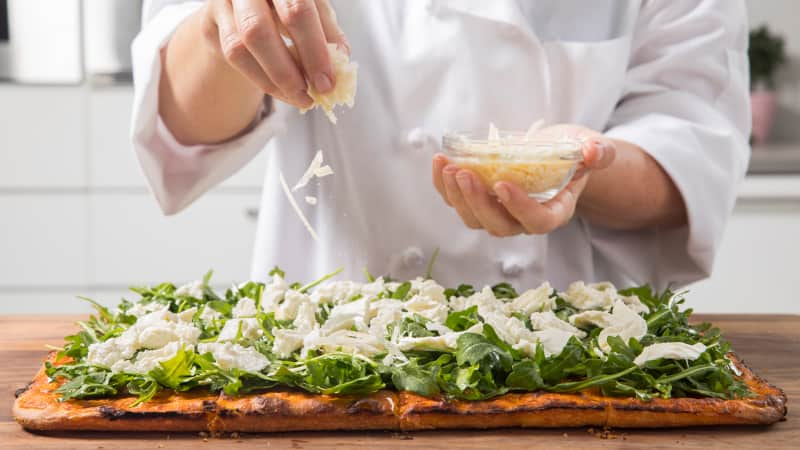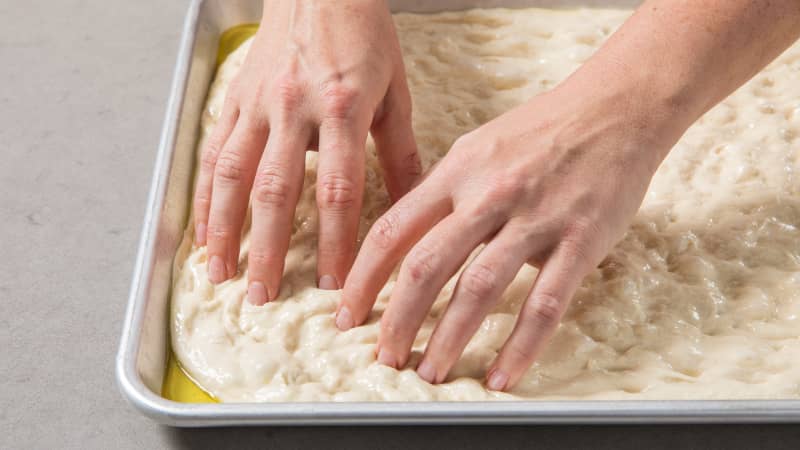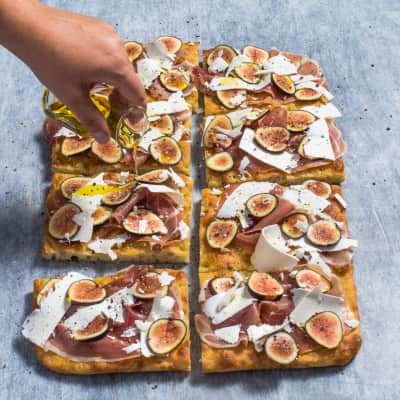Though most pizza recipes these days use a stand mixer to make the dough, all the al taglio recipes I found did it by hand. Furthermore, instead of kneading the dough, they simply folded it over itself several times, let it rest, and then repeated the folds and the rest one or two more times.
I loved how simple and low-tech this approach was, and I followed suit: I stirred together bread flour, yeast, water, and oil in a bowl with a wooden spoon until no dry flour remained. I covered the dough and let it rest for 10 minutes. This quick rest—known technically as an autolyse—lets the flour absorb water and encourages gluten development to begin before the salt (which would inhibit both) is added. Then I stirred in the salt and let the dough sit for another 20 minutes.
It was time to fold. After wetting my hands to prevent the dough from sticking to them, I gently lifted the edge of the dough and brought it to the middle, repeating these folds all the way around the dough. Once again, I covered it and let it rest. After 20 minutes, I gave the dough another set of folds. These simple movements, in combination with time, were a surprisingly effective way to build gluten in this wet dough. (When I compared kneading the dough continuously in a stand mixer for 10 minutes and then letting it rest for a similar total time, not as much gluten developed and the dough baked up into a flatter, less airy crust. To understand why, see “Hand versus Machine.”) The dough was now smooth and supple; it was also starting to show plenty of yeast activity. I then covered the bowl with plastic wrap and placed it in the refrigerator to ferment overnight.
After its overnight rest, I brushed the top of the dough with oil, turned it out onto a baking sheet liberally coated with vegetable oil spray, and stretched it as best I could toward the corners of the sheet. I covered the dough and let it proof at room temperature until it was slightly puffy, which took about an hour. I brushed on a simple tomato sauce and, to give the dough’s moisture more time to cook off, baked it in the middle of a 450-degree oven instead of the usual 500-degree oven. I hoped a lower temperature (and thus a longer baking time) would mean that the bottom of the crust would crisp sufficiently without a baking stone. After about 25 minutes, the bottom was reasonably crisp and the top was browned.








